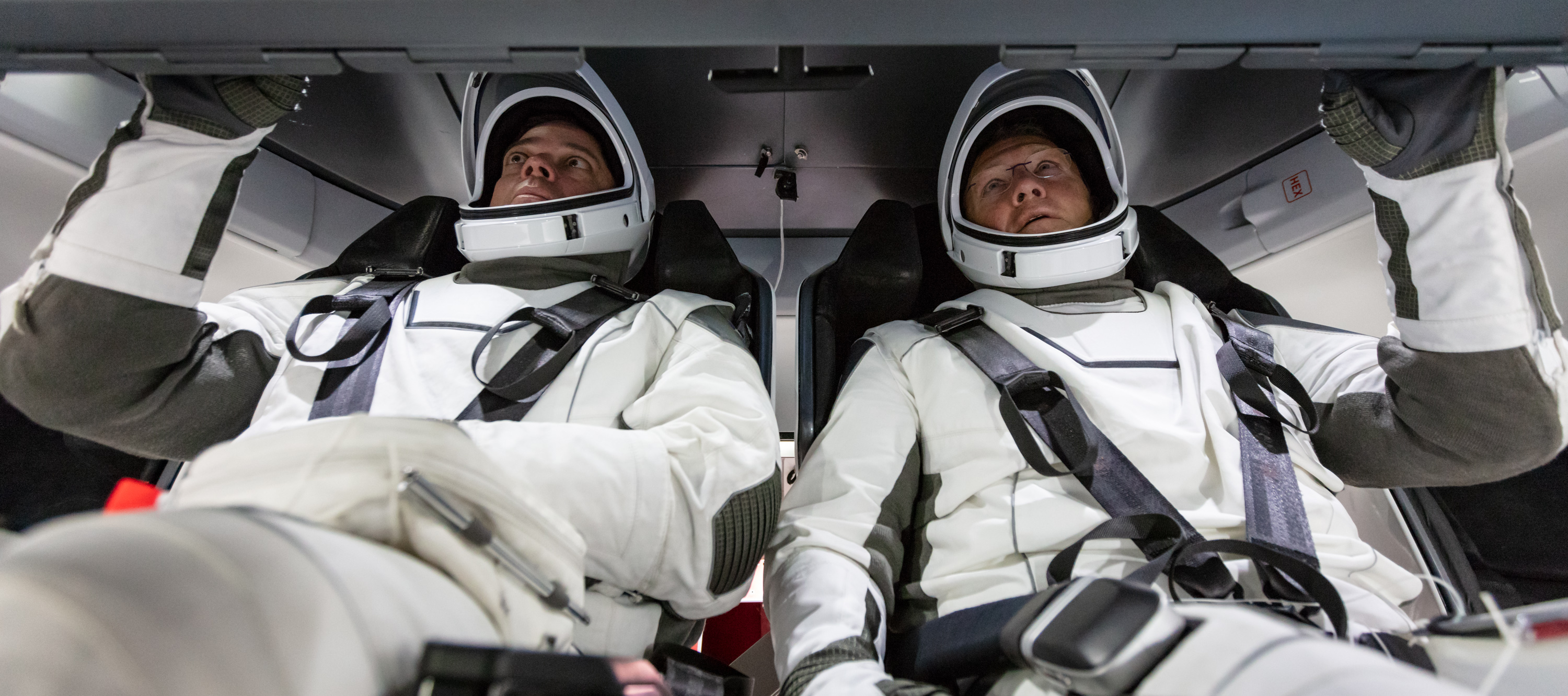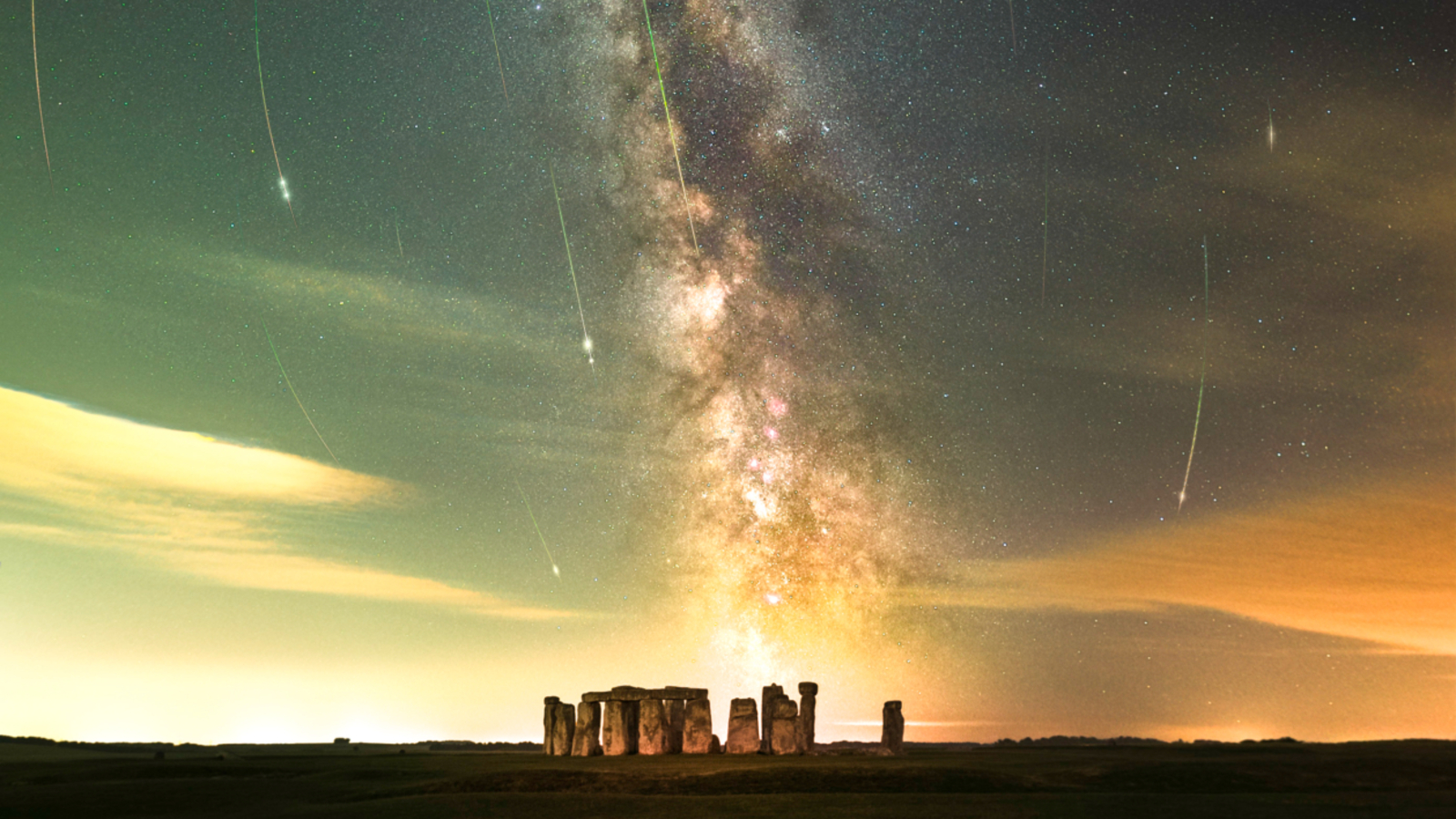SpaceX, NASA target May 27 for 1st Crew Dragon test flight with astronauts

The first flight of NASA astronauts from U.S. soil in nearly nine years finally has a launch date: May 27.
The mission will launch astronauts Bob Behnken and Doug Hurley to the International Space Station on a SpaceX Crew Dragon spacecraft in a final test flight for NASA. The mission, Demo-2, will mark NASA's first crew launch from American soil since the agency's space shuttle fleet retired in July 2011.
Liftoff is set for 4:32 p.m. EDT (2032 GMT) from historic Launch Pad 39A — the same site used for NASA's Apollo and shuttle missions — at NASA's Kennedy Space Center in Florida.
"On May 27, will once again launch American astronauts on American rockets from American soil!" NASA chief Jim Bridenstine wrote on Twitter in an announcement today (April 17).
Related: SpaceX Crew Dragon arrives at launch site for historic Demo-2 flight
Infographic: How SpaceX's Crew Dragon space capsule works
The Demo-2 mission will use a Falcon 9 rocket (also built by SpaceX) to launch Benhken and Hurley on the first crewed test flight of a Crew Dragon spacecraft. NASA has not set a specific duration for the mission, describing it only as "an extended stay at the space station," in an announcement.
Once the mission is complete, Behnken and Hurley will return to Earth with a splashdown in the Atlantic Ocean, off Florida's east coast, to be retrieved by a SpaceX recovery ship.
Breaking space news, the latest updates on rocket launches, skywatching events and more!
SpaceX launched its first uncrewed test flight to the International Space Station in March 2019. While that flight, called Demo-1, was a success, the capsule used on the mission was destroyed a month later during ground-based tests of the abort engine designed to protect astronauts during a launch emergency.
SpaceX has since fixed the abort engine issue and launched a successful in-flight abort test in January of this year. The company has also completed a series of successful parachute tests, setting the stage for the Demo-2 launch.
SpaceX is one of two commercial companies tapped by NASA to fly astronauts to and from the International Space Station. The other company is Boeing, which is developing its own Starliner spacecraft and launched an uncrewed test flight in December that failed to reach the station due to software issues. Boeing plans to fly a second uncrewed test flight for NASA before launching astronauts.
NASA picked SpaceX and Boeing as its space taxi providers in 2014, initially awarding $2.6 billion to SpaceX and $4.2 billion to Boeing to develop the new spacecraft. NASA's investment in both companies has increased over the years, with SpaceX receiving more than $3.1 billion for Crew Dragon's development and six operational crewed flights to the station, according to Spaceflight Now.
NASA has already named the crew for the first operational Crew Dragon mission to follow the Demo-2 launch. That flight would launch NASA astronauts Michael Hopkins, Victor Glover, Jr., Shannon Walker and Japanese Aerospace Exploration Agency (JAXA) astronaut Soichi Noguchi to the space station sometime after Demo-2.
- In photos: SpaceX's amazing Crew Dragon in-flight abort test launch
- SpaceX: Facts about Elon Musk's private spaceflight company
- Watch how SpaceX's Crew Dragon will launch astronauts into space (video)
Email Tariq Malik at tmalik@space.com or follow him @tariqjmalik. Follow us @Spacedotcom, Facebook and Instagram.
OFFER: Save 45% on 'All About Space' 'How it Works' and 'All About History'!
For a limited time, you can take out a digital subscription to any of our best-selling science magazines for just $2.38 per month, or 45% off the standard price for the first three months.
Join our Space Forums to keep talking space on the latest missions, night sky and more! And if you have a news tip, correction or comment, let us know at: community@space.com.

Tariq is the Editor-in-Chief of Space.com and joined the team in 2001, first as an intern and staff writer, and later as an editor. He covers human spaceflight, exploration and space science, as well as skywatching and entertainment. He became Space.com's Managing Editor in 2009 and Editor-in-Chief in 2019. Before joining Space.com, Tariq was a staff reporter for The Los Angeles Times covering education and city beats in La Habra, Fullerton and Huntington Beach. In October 2022, Tariq received the Harry Kolcum Award for excellence in space reporting from the National Space Club Florida Committee. He is also an Eagle Scout (yes, he has the Space Exploration merit badge) and went to Space Camp four times as a kid and a fifth time as an adult. He has journalism degrees from the University of Southern California and New York University. You can find Tariq at Space.com and as the co-host to the This Week In Space podcast with space historian Rod Pyle on the TWiT network. To see his latest project, you can follow Tariq on Twitter @tariqjmalik.

